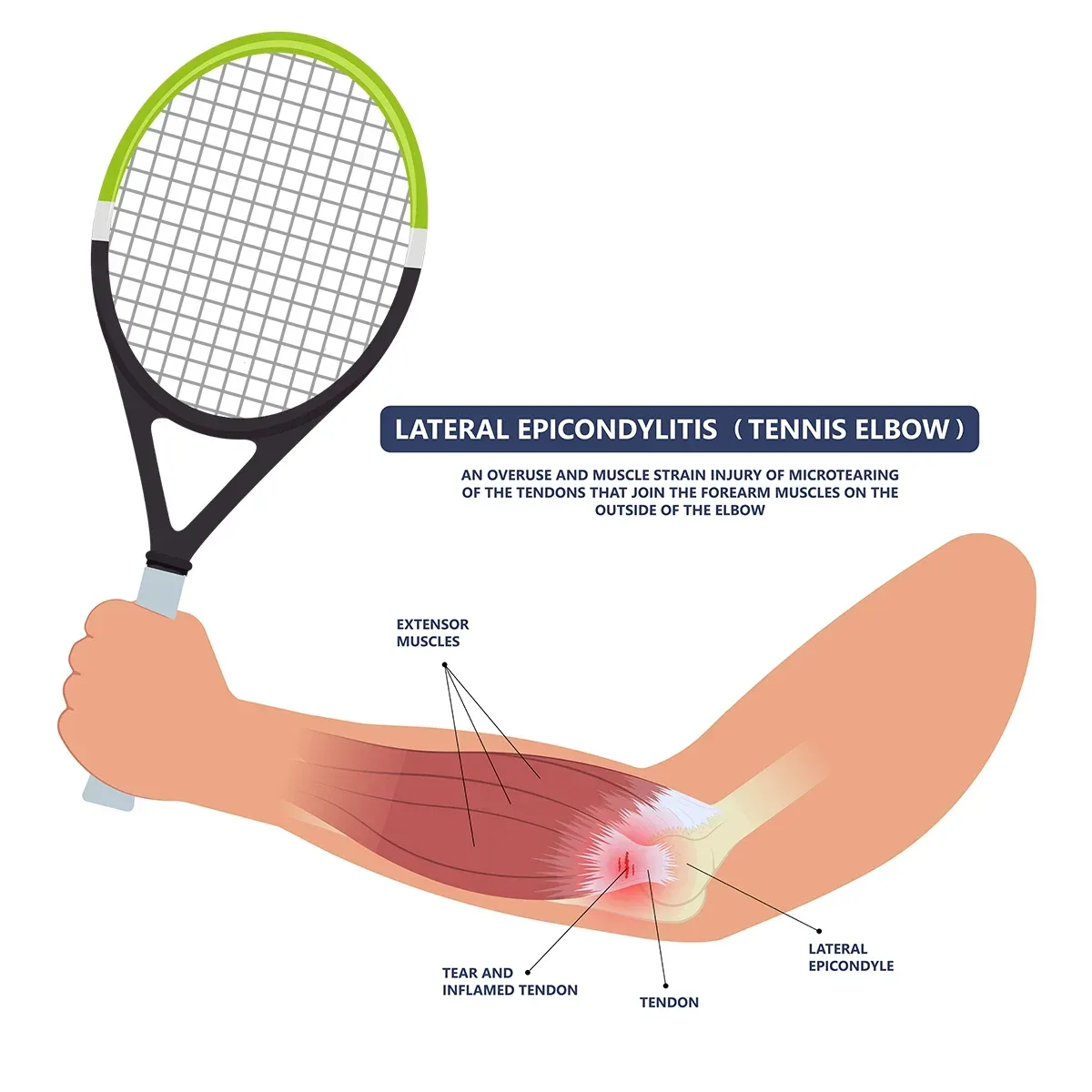Tennis elbow, also known as lateral epicondylitis, is a painful condition that affects the elbow joint. It occurs when the tendons that attach the forearm muscles to the outside of the elbow become inflamed or damaged. Despite its name, tennis elbow can affect anyone who repeatedly uses their forearm muscles, not just tennis players.
Symptoms of Tennis Elbow
The primary symptom of tennis elbow is pain on the outside of the elbow. The pain may radiate down the forearm and worsen with certain movements, such as gripping or lifting objects. Other symptoms may include:
- Weakness in the forearm and wrist
- Stiffness in the elbow joint
- Tenderness to the touch on the outside of the elbow
- Pain that worsens with activities that involve the forearm muscles
Causes of Tennis Elbow
Tennis elbow is caused by repetitive stress on the forearm muscles and tendons. This stress can come from a variety of activities, including:
- Playing tennis or other racquet sports
- Using hand tools, such as hammers or screwdrivers
- Typing or using a computer mouse for extended periods
- Playing musical instruments that require repetitive hand movements
Treatment for Tennis Elbow
Treatment for tennis elbow typically involves rest, ice, and over-the-counter pain medications. Specific treatments may include:
- Resting the affected arm and avoiding activities that cause pain
- Applying ice to the elbow for 15-20 minutes several times a day
- Taking nonsteroidal anti-inflammatory drugs (NSAIDs), such as ibuprofen or naproxen
- Wearing a brace or splint to support the elbow and reduce strain on the tendons
- Performing stretching and strengthening exercises for the forearm muscles
- Receiving physical therapy to improve flexibility and strength in the affected arm
Prevention of Tennis Elbow
To prevent tennis elbow, it is important to use proper technique when performing repetitive hand and wrist movements. This may include:
- Using the correct grip size and technique when playing tennis or other racquet sports
- Taking breaks and stretching the forearm muscles during prolonged computer use or manual labour
- Using ergonomic tools and equipment to reduce strain on the forearm muscles
- Gradually increasing the intensity and duration of new activities to allow the muscles and tendons to adapt
By understanding the causes and symptoms of tennis elbow and taking steps to prevent and treat the condition, individuals can reduce their risk of developing this painful and debilitating condition.
